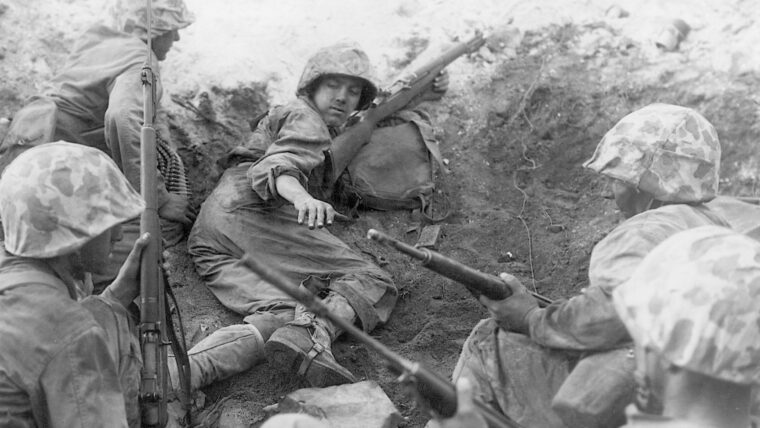
Pacific Theater
Marine Lieutenant Jack Power: WWII Medal of Honor Recipient
By Michael D. HullOutside City Hall in Worcester, Mass., stands a soldier who has been on guard duty since 1947. Read more
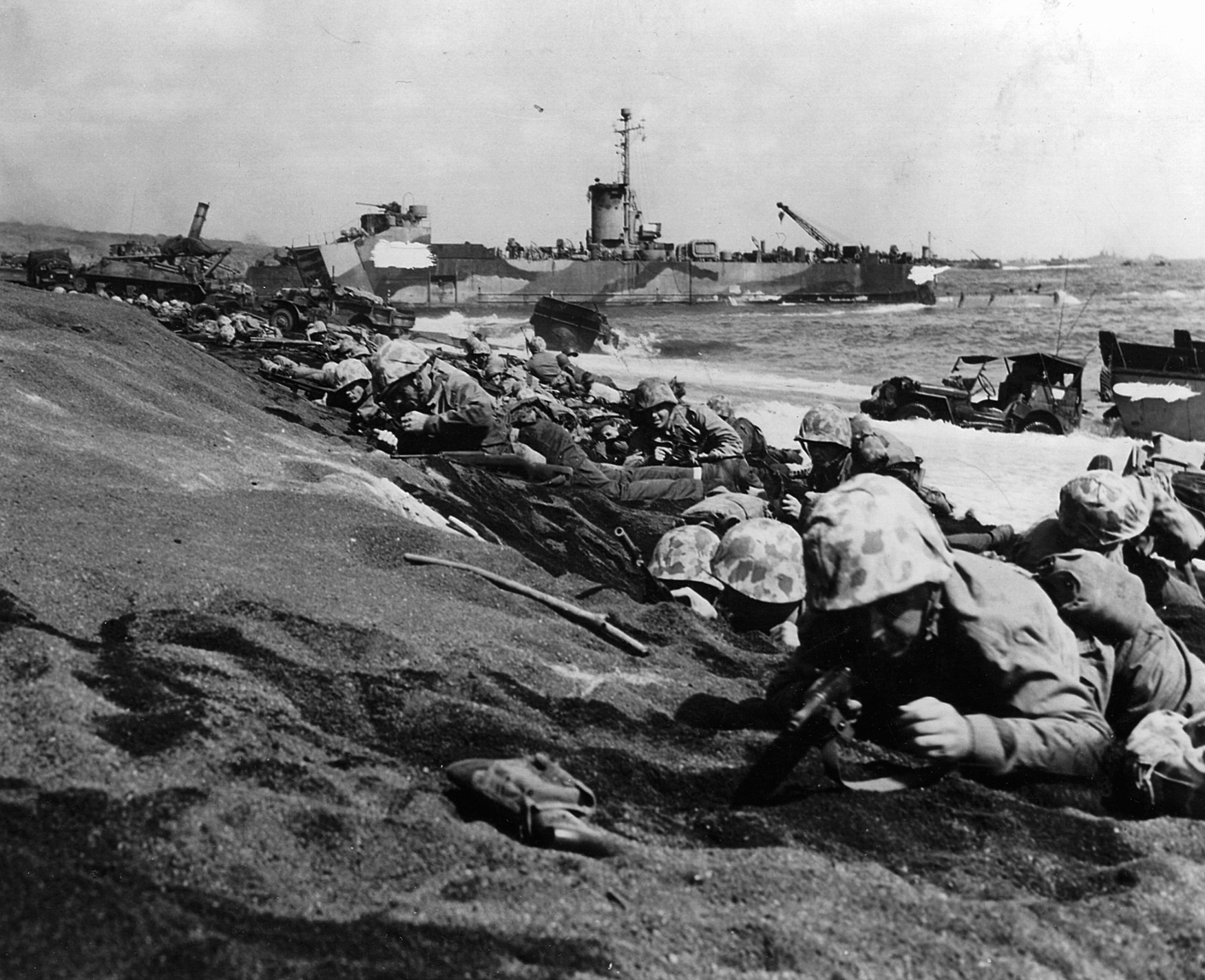
The Pacific Theater during World War II is generally regarded as the area of military confrontation between the Allied powers and Imperial Japan. The Pacific Theater consists of the entire operational expanse of the war from the Aleutian Islands in the north to Australia in the south, including island chains such as the Solomons, Gilberts, Marshalls, and Marianas. The China-Burma-India (CBI) Theater is also considered a major component of the Pacific Theater.

Pacific Theater
Outside City Hall in Worcester, Mass., stands a soldier who has been on guard duty since 1947. Read more
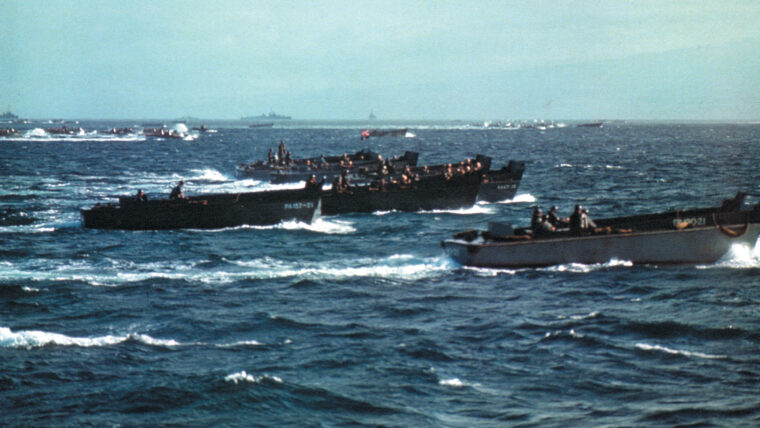
Pacific Theater
In November 1941, the U.S. Asiatic Fleet weighed anchor in Shanghai, China, for the last time. Alarmed by the growing hostility and aggressiveness of the Japanese, Admiral Thomas Hart ordered the outnumbered and outgunned American vessels moved to the relative safety of Manila Bay in the Philippines. Read more
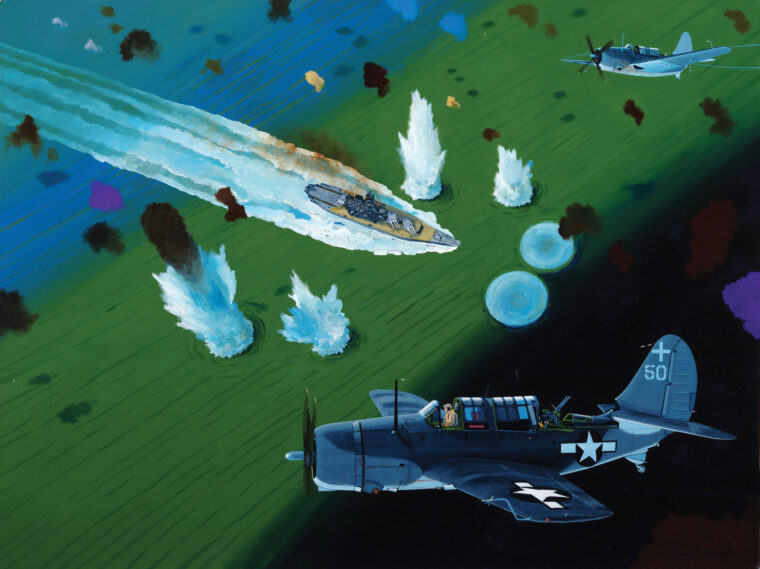
Pacific Theater
In warfare, desperate times call for desperate measures, and in the fall of 1944 the empire of Japan found itself in precisely that predicament. Read more
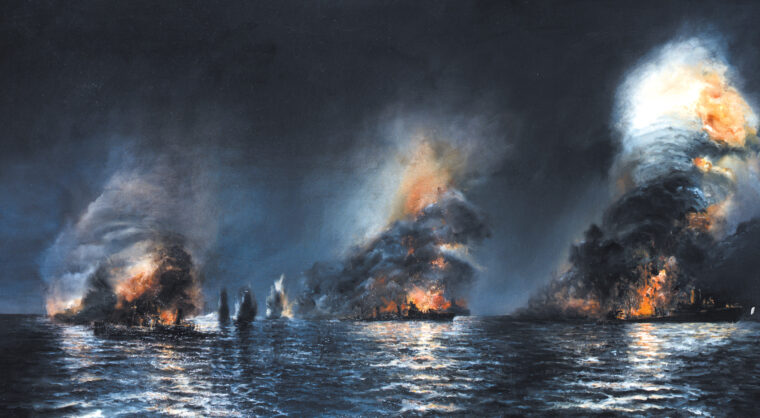
Pacific Theater
During World War II, the United States employed 288 submarines, the vast majority of which raided Japanese shipping in the Pacific, thus preventing the enemy’s vital supplies and reinforcements from reaching the far-flung island battlefields. Read more
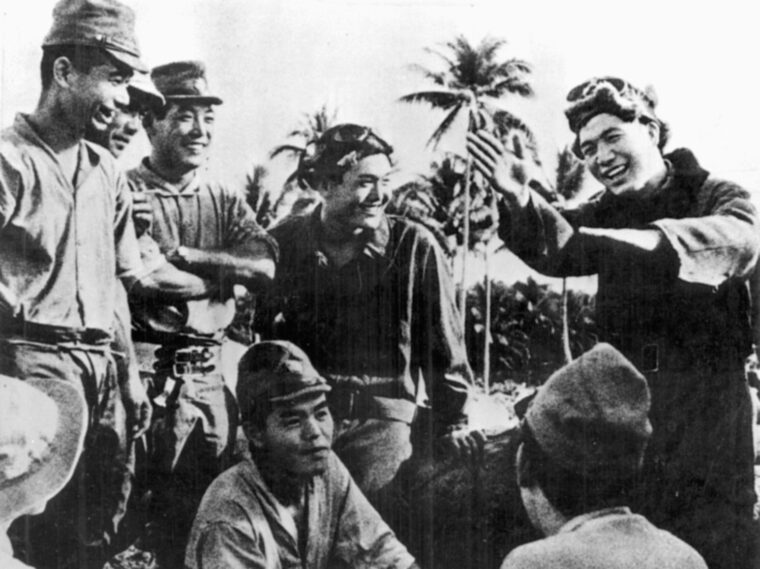
Pacific Theater
The siege of Wake Island lasted a relatively short time, from December 8 to December 23, 1941, yet it looms large in the annals of the Second World War. Read more
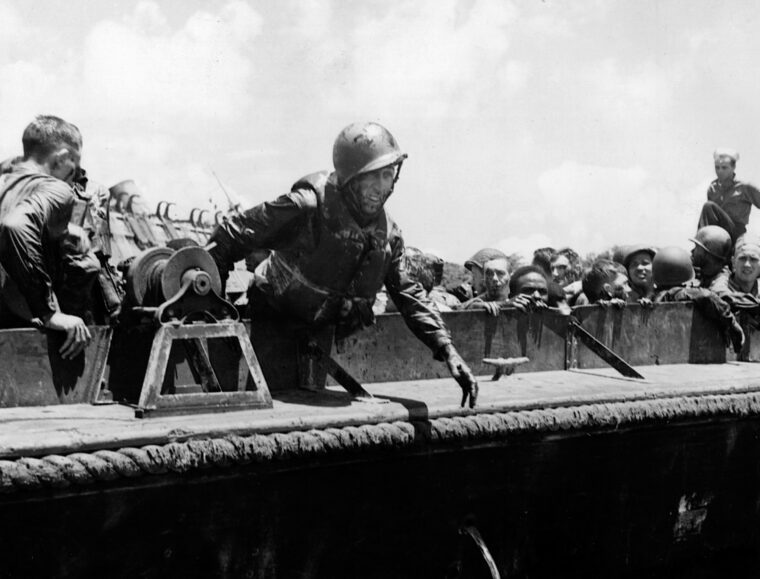
Pacific Theater
It was supposed to be a routine delivery of soldiers to the battlefields of Guadalcanal—but nothing in war is ever routine. Read more
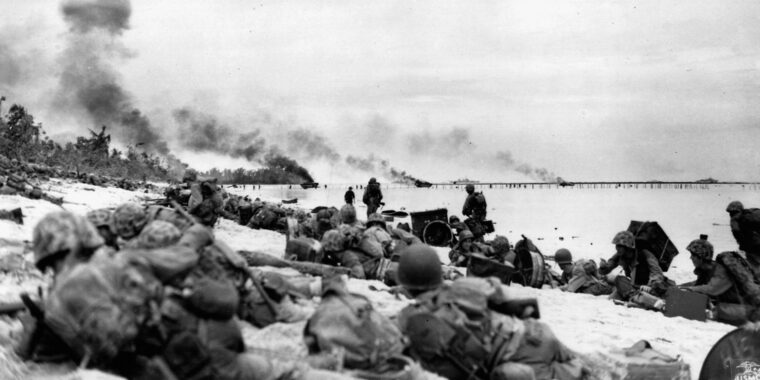
Pacific Theater
As he watched the preliminary bombardment from the railing of his ship, Colonel Lewis B. “Chesty” Puller had deep reservations. Read more
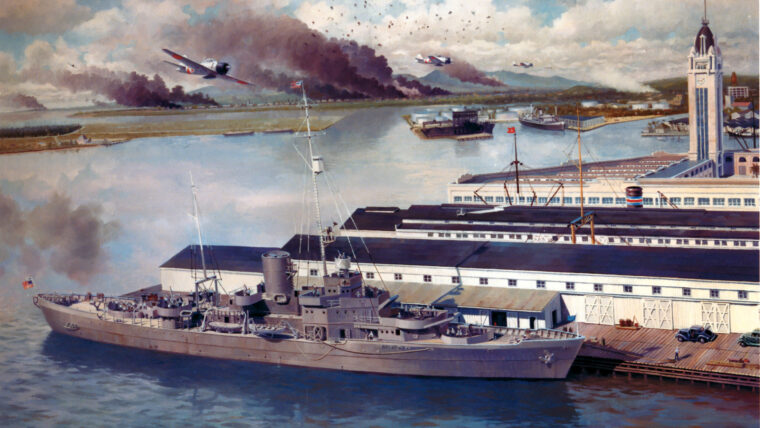
Pacific Theater
Built in the mid-1930s as one of the famed Treasury class of large U.S. Coast Guard cutters, USCGC Taney had a distinguished career spanning five decades of continuous service. Read more
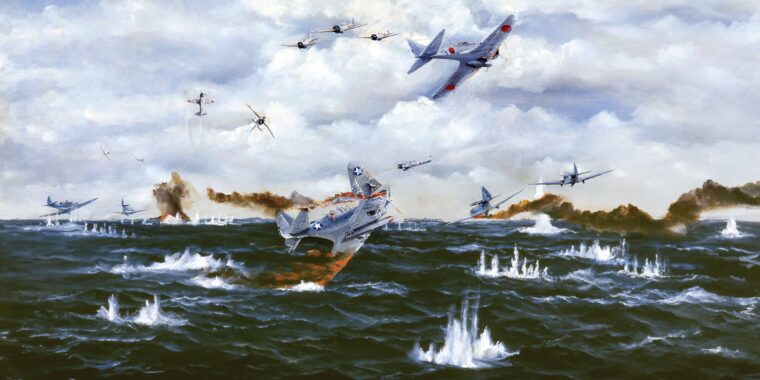
Pacific Theater
In 1982, Captain Bert Earnest and Commander Harry Ferrier were present at an event to commemorate the 40th Anniversary of the Battle of Midway. Read more
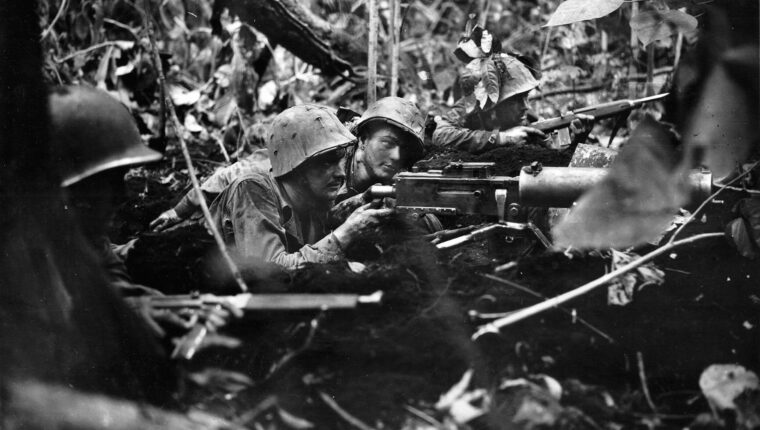
Pacific Theater
On the island of New Britain, at the north end of the Solomon chain, lay a major base that provided Japanese forces with the naval power, supplies, and reinforcements to control the sea lanes of the Southwest Pacific. Read more
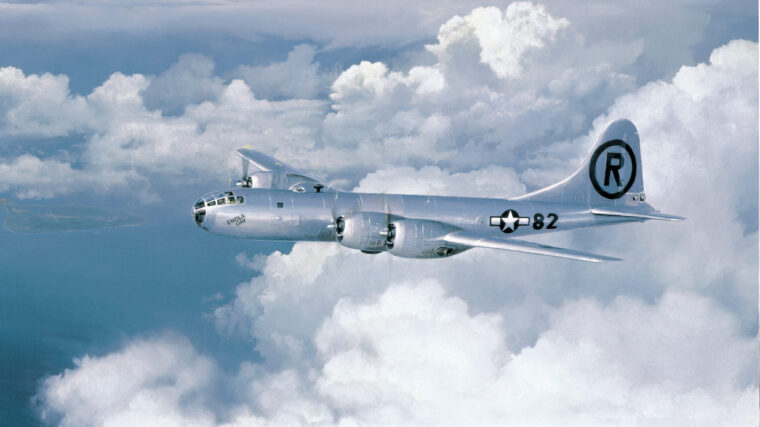
Pacific Theater
Today, in his nineties, Paul Tibbets is still a handsome man. He has a full head of silver hair. Read more
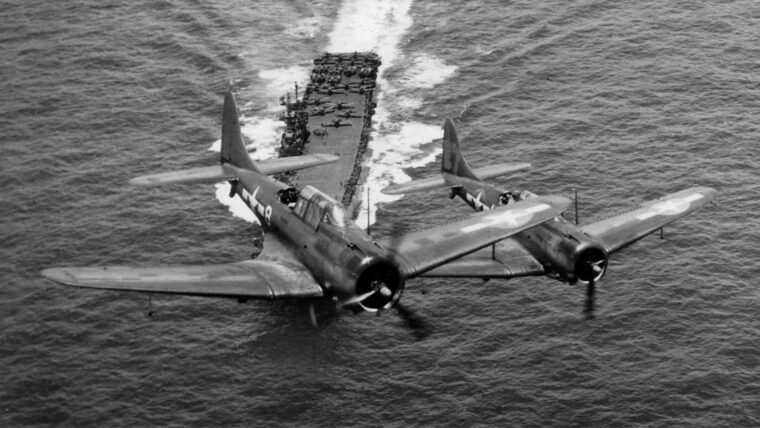
Pacific Theater
Many people have heard of the six American Curtiss P-40 Tomahawk fighters that actually got off the ground and contested the Japanese attack on Pearl Harbor, December 7, 1941. Read more
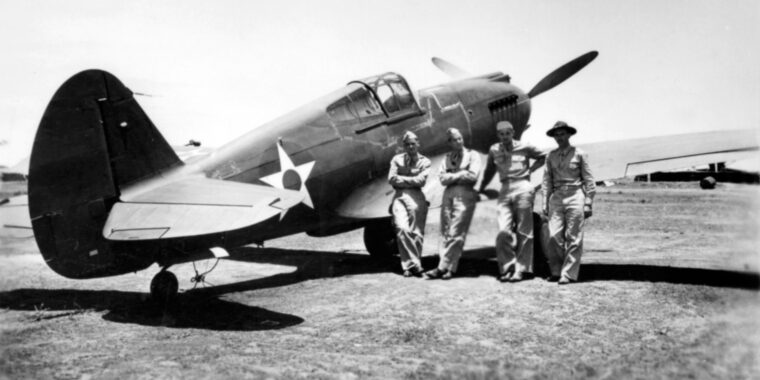
Pacific Theater
In the popular history of World War II, the assertion that the United States was caught unprepared in Hawaii and the Philippines has become widely accepted as fact. Read more
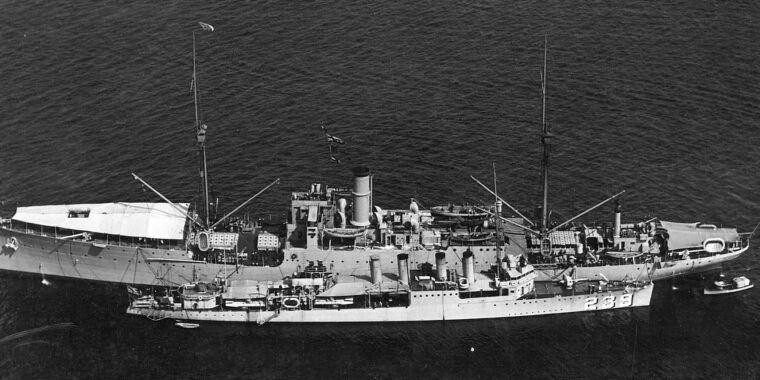
Pacific Theater
On Saturday, December 6, 1941, the repair ship USS Vestal eased alongside the USS Arizona at her berth at Pearl Harbor. Read more
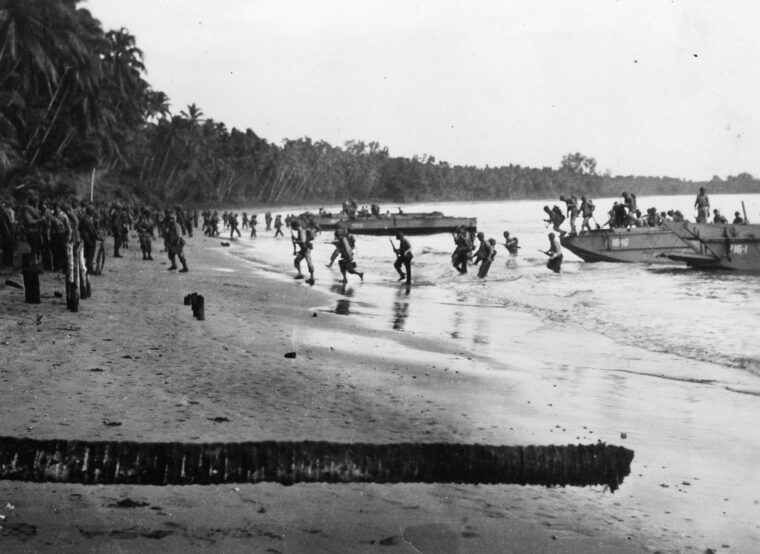
Pacific Theater
In the long and distinguished history of the U.S. Marine Corps, thousands of marines have been awarded medals for meritorious service on the battlefield. Read more
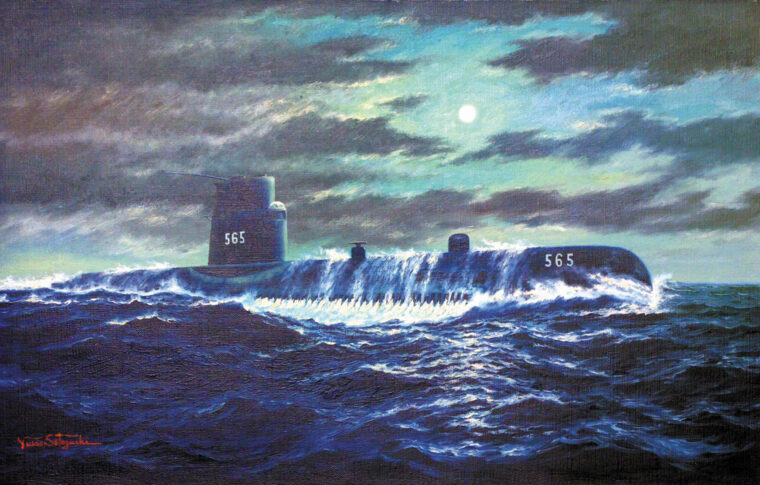
Pacific Theater
On the night of September 14, 1942, the men aboard the U.S. Navy submarine Wahoo spotted smoke rising from the funnel of a vessel emerging from Truk’s north pass. Read more
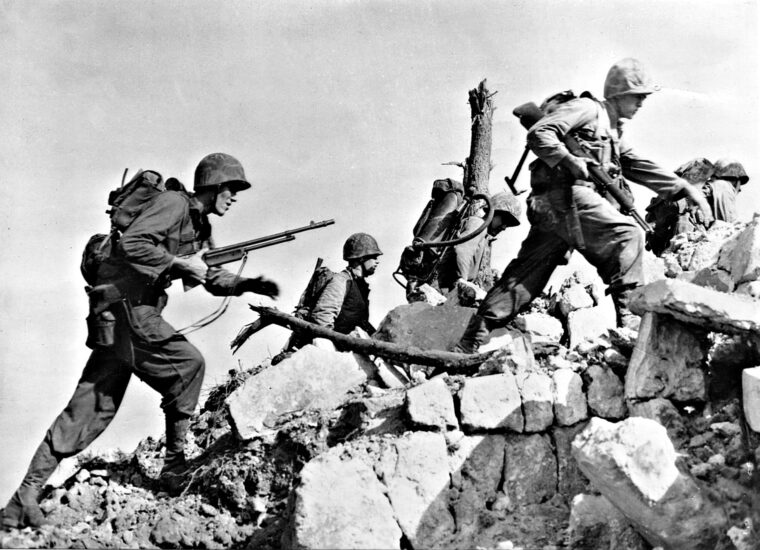
Pacific Theater
The grimy, weary Marines heard with little emotion the instructions shouted by their officer. He wanted them to mount yet another charge to the top of the nondescript hill blocking their way, another collection of rock housing an enemy that tried to halt their advance. Read more

Pacific Theater
He suffered from acute alcoholism and severe bouts of depression. As a result of his heavy drinking, he would wander about for days yelling incoherently. Read more

Pacific Theater
Most writings about World War II tend to attribute the success or failure of military operations to the skill with which generals and admirals handled their forces in battle and to the fighting abilities of soldiers, sailors, and airmen. Read more
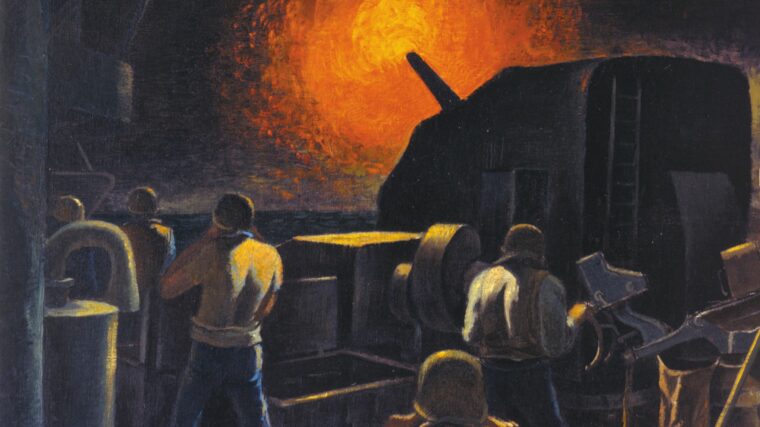
Pacific Theater
With bond clerk Marge Henning standing by as a witness, Colonel Frank Eldridge removed the first piece of the puzzle. Read more